04 Apr Easter Island on Two Wheels
Easter Island on Two Wheels
Alex Burridge – MD Tailor-Made Journeys March 2024
Exploring Rapa Nui on two wheels.
Part of any experience is how you do it – i.e. it’s not just the place that’s important.
We chose to explore some of Rap Nui’s most famous sites by mountain bike (and I’d packed my cycle pants and they’d come a long way).
After a healthy breakfast we jumped on our bikes. The first kilometre was on a simple track downhill to the coast; a gentle start. The road follows the relatively new volcanic coastline, the waves crash onto the black volcanic rocks just a few metres to our right. Soon we find our first Ahu (ceremonial platform), this one is simple and its moai lies where it fell (from whatever cause: weather, tsunami or purposefully destroyed). There are more than 300 Ahus on Rapa Nui. Most villages had a ceremonial platform which formed an important part of Rapa Nui culture.
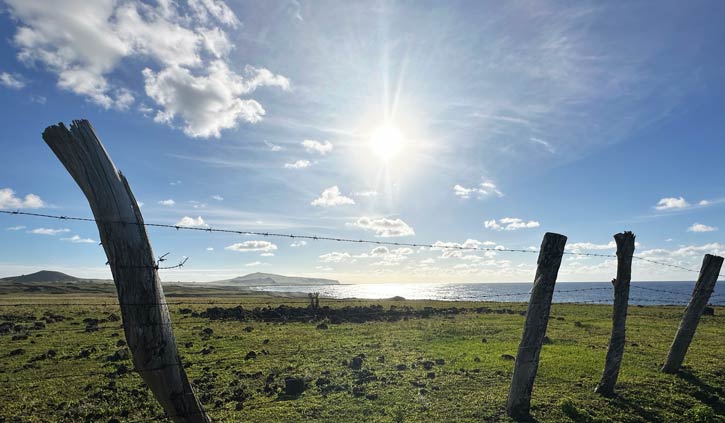
Track to the coastal road and where we’re headed
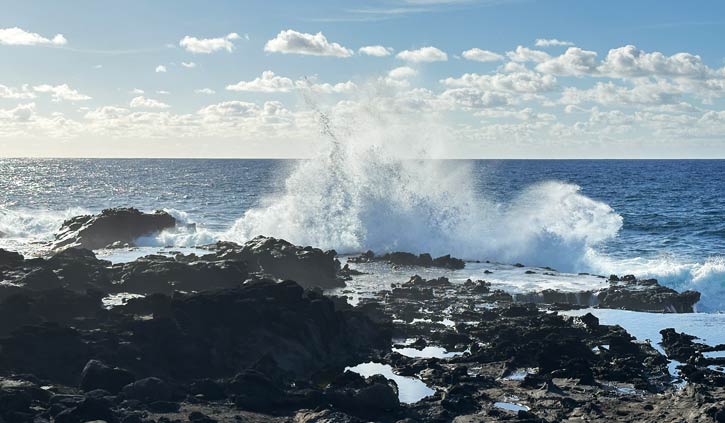
Rapa Nui’s volcanic coastline
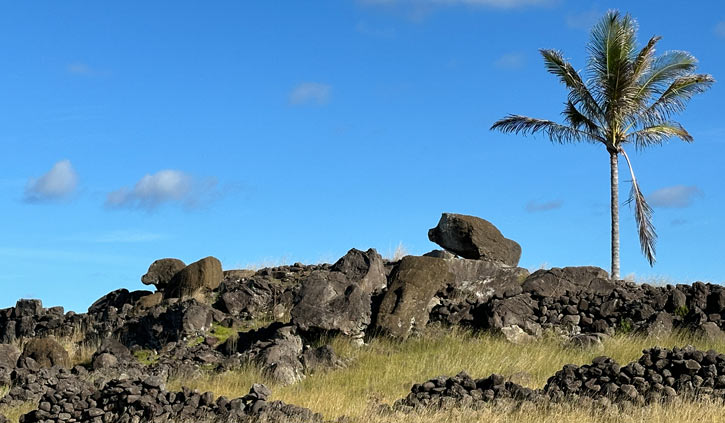
The majority of Ahus and their Moais lie untouched
We pedal on enjoying sea breezes and a beautiful day. Our Explora guide David loves cycling and loves Rapa Nui; a perfect combination. The coastal road takes us to the South of the Moai quarry (Rano Raraku which we’ll explore on a walk in the afternoon) and soon arrive at the most well-known Ahu on Easter Island Tongariki.
Tongariki Ahu has 15 Moais, the heaviest weighs an incredible 86 tons (equally incredible there’s a larger one in the quarry, estimated to be 180 tons). It’s believed they were toppled during infighting on the Island. Later the already toppled Moais were pushed further inland by the 1960 Tsunami. Ahu Tongariki was restored by a Chilean/Japanese project that lasted over five years. Tongariki Ahu is perfectly aligned with sunrise on the summer solstice (21 December) an important date in Rapa Nui/Polynesian culture.
We arrive as many travellers are leaving the site – so we have Tongariki to ourselves – it’s a stunning, powerful, magical place. Oh to have witnessed the ceremonies of the Rapa Nui people at this site.
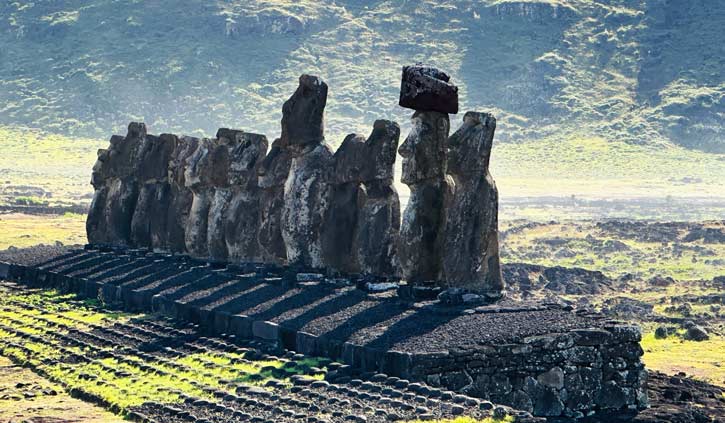
Tongariki – restored in the 1960s
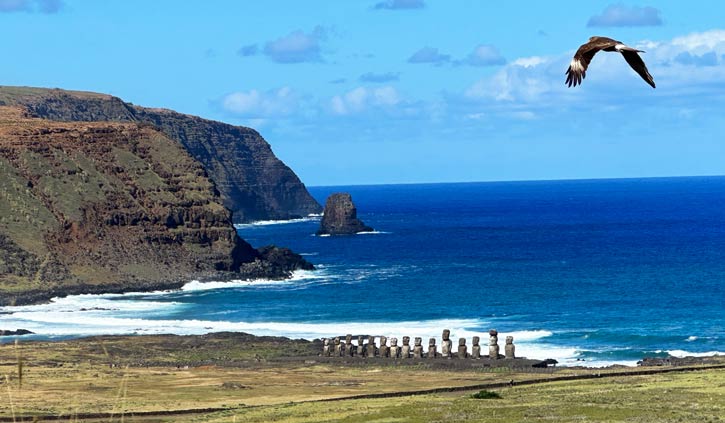
View of Tongariki from the moai quarry
We pedal on, more Ahus, as well as the remains of small walled gardens, used by locals to protect crops from onshore winds. There are few beaches on Rapa Nui (due to being a young volcanic island), our destination was one of the two sandy beaches. Anakena has a small protected bay, it’s a perfect end for our bike ride. We explore the Ahu and then head to the beach and for a well-earned swim.
Anakena is also known as ‘The Bay of the King’, named after the first Rapa Nui king Hotu Matu’a who arrived here a thousand years ago when the island was first populated by Polynesians. The moai of Ahu Ature Huke is the first moai site ever to be restored/raised. The work was completed by Norwegian explorer Thor Heyerdahl in 1956 on one of his Kon-Tiki expeditions.
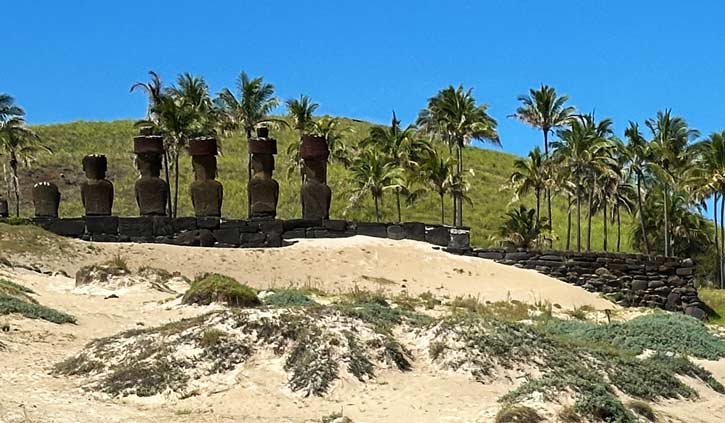
Moais at the beach
All trip long our support vehicle followed at a distance, so if the ride is too challenging or you have a mechanical issue there’s support at hand. After relaxing on the beach and bikes stowed on the trailer we are driven back to Explora Easter Island.
With few roads and little traffic travelling by mountain bike is a perfect way to explore Rapa Nui.

